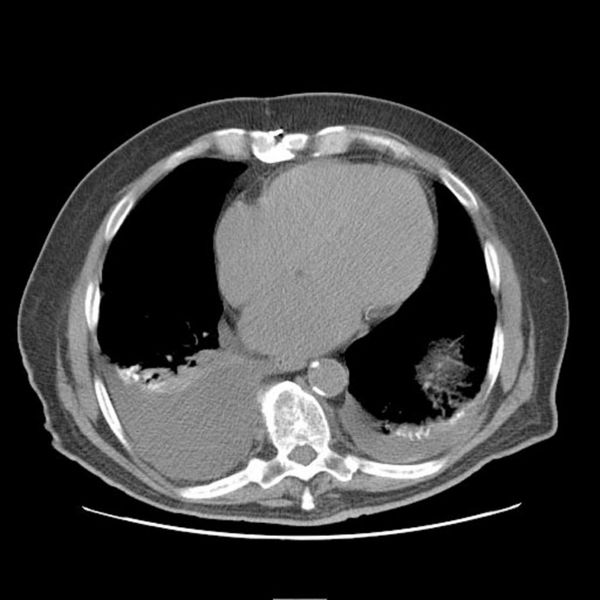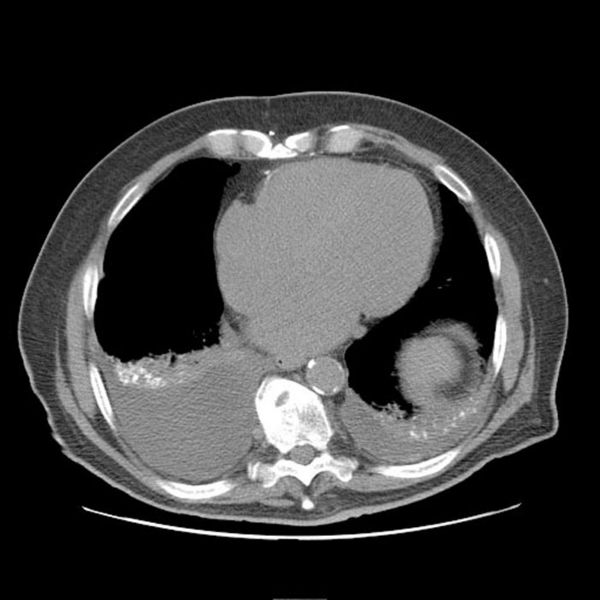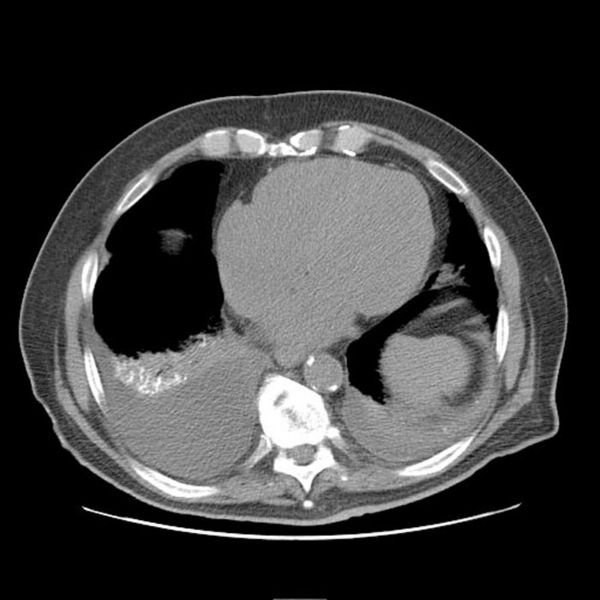Aspiration pneumonia: Difference between revisions
(→Causes) |
(→Causes) |
||
| Line 18: | Line 18: | ||
'''Aspiration pneumonia''' (or aspiration pneumonitis) is caused by [[Pulmonary aspiration|aspirating]] foreign objects which are usually oral or gastric contents, either while eating, or after reflux or vomiting which results in [[bronchopneumonia]].<ref>{{cite web | url = http://www.kmle.com/search.php?Search=aspiration+pneumonia | title = ''KMLE Medical Dictionary Definition of aspiration pneumonia'' | author = [http://www.kmle.com The American Heritage Stedman's Medical Dictionary]}}</ref> The resulting lung inflammation is not an infection but can contribute to one, since the material aspirated may contain [[Anaerobic organism|anaerobic]] bacteria or other unusual causes of pneumonia. Aspiration is a leading cause of death among hospital and [[nursing home]] patients, since they often cannot adequately protect their airways and may have otherwise impaired defenses. | '''Aspiration pneumonia''' (or aspiration pneumonitis) is caused by [[Pulmonary aspiration|aspirating]] foreign objects which are usually oral or gastric contents, either while eating, or after reflux or vomiting which results in [[bronchopneumonia]].<ref>{{cite web | url = http://www.kmle.com/search.php?Search=aspiration+pneumonia | title = ''KMLE Medical Dictionary Definition of aspiration pneumonia'' | author = [http://www.kmle.com The American Heritage Stedman's Medical Dictionary]}}</ref> The resulting lung inflammation is not an infection but can contribute to one, since the material aspirated may contain [[Anaerobic organism|anaerobic]] bacteria or other unusual causes of pneumonia. Aspiration is a leading cause of death among hospital and [[nursing home]] patients, since they often cannot adequately protect their airways and may have otherwise impaired defenses. | ||
==Causes== | ==[[Pneumonia causes#Aspiration pneumonia causes|Causes]]== | ||
==Location== | ==Location== | ||
Revision as of 18:40, 5 September 2012
For patient information click here Template:DiseaseDisorder infobox
|
Pneumonia Microchapters |
|
Diagnosis |
|---|
|
Treatment |
|
Case Studies |
|
Aspiration pneumonia On the Web |
|
American Roentgen Ray Society Images of Aspiration pneumonia |
Editor-In-Chief: C. Michael Gibson, M.S., M.D. [1]
Overview
Aspiration pneumonia (or aspiration pneumonitis) is caused by aspirating foreign objects which are usually oral or gastric contents, either while eating, or after reflux or vomiting which results in bronchopneumonia.[1] The resulting lung inflammation is not an infection but can contribute to one, since the material aspirated may contain anaerobic bacteria or other unusual causes of pneumonia. Aspiration is a leading cause of death among hospital and nursing home patients, since they often cannot adequately protect their airways and may have otherwise impaired defenses.
Causes
Location
The location is often gravity dependent, and depends on the patient position. Generally the right middle and lower lung lobes are the most common sites of infiltrate formation due to the larger caliber and more vertical orientation of the right mainstem bronchus.
Patients who aspirate while standing can have bilateral lower lung lobe infiltrates. The right upper lobe is a common area of consolidation in alcoholics who aspirate in the prone position. Depending on the acidity of the aspirate, a chemical pneumonitis can develop, and bacterial pathogens (particularly anaerobic bacteria) may add to the inflammation.
Histopathological Findings in Aspiration Pneumonia
{{#ev:youtube|bTqgAfQv0p4}}
Imaging studies
Plain films
- AP portable chest images may demonstrate bilateral opacities in the middle or lower lung zones.
- On PA and lateral images, the opacities may be localized to the posterior segments of upper lobes or to the superior segments of lower lobes.
CT
- Aspirated low-density organic material such as mineral oil in the tracheobronchial tree or alveolar spaces cannot be diagnosed on plain radiographs, but they can be demonstrated and perhaps measured on CT scans.
- Opaque aspirates are also well demonstrated on CT scans.


